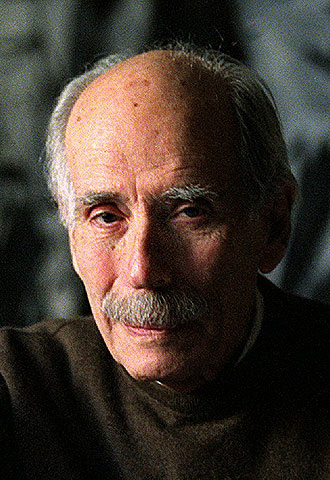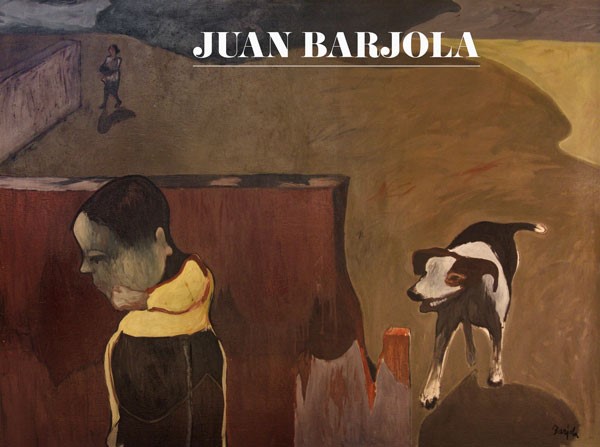Juan Barjola, the stray dog as a metaphor for the human soul

The work of Juan Barjola, despite the fact that he went through different creative stages, was always traversed by a tragic feeling of life, which was translated into paintings pregnant with dramatic intensity.
Considered one of the essential figures of the New Spanish Figuration, the one that emerged after the decline of informalism between the 1950s and 1960s, Barjola developed an expressionist painting with metaphysical overtones. The oil that we present on this occasion (lot 35130528) currently up for auction) transmits a temperamental facet of Barjola calm and intimate, if we compare it with other types of paintings by the artist directly linked to war and abuse of power. In this case, it introduces us to a somewhat dreamlike scenario, in which a stray dog tries to attract the attention of a pensive young man. It walks away, ignoring the animal.
Dogs often appear in Barjola’s more allegorical works. With the figure of the abandoned and famished dog, he wanted to express the wandering and helpless spirit of human nature. Having lived through civil war and post-war poverty, stray dogs were plentiful in the streets, and from childhood it was an image that would remain imprinted on his memory.
It is a painting steeped in mystery, with a third solitary figure and a shadow solidifying in the distance, like an omen materializing in a dense black cloud. About the character in the first term, it is difficult to venture his intentions, but his smile is disturbing.
In this canvas, we find a Barjola with a fully mature style, who has already left behind the post-cubist stage of his youth, as well as the foray into painting thick fillings, to give way to compositions where a less angular line dominates but no less expressive, as well as a more dilute application of color fields. A wall divides the landscape, helping to enhance the aura of isolation that surrounds each figure, so that the whole emanates great visual power. The result is lyrical and suggestive. The painter has been able to safeguard his secret.
Of Extremadura origin, Juan Barjola (1919-2004) developed his art studies and his first exhibitions in Madrid. In 1957, he made his solo debut at the April gallery in Madrid, and that same year he held two more personal exhibitions in Brussels, at the Theater and Vallvora galleries. He then began a brilliant exhibition career that would take his work to Europe, Japan, the United States and Latin America. in 1960 he received a scholarship from the Juan March Foundation that will allow him to travel to Paris and Belgium, and in 1963 he is distinguished by critics with the Eugenio D’Ors Medal. That same year he exhibited at the General Directorate of Fine Arts, and shortly after he obtained the National Drawing Prize at the National Exhibition (1968). Around 1964 his work underwent a new evolution, marked by the painting of Velázquez, Goya and El Greco. Thus begins the Golden Age of the painter, with paintings transformed by the appearance of the human figure, three-dimensional space, natural light and the open air. His work can be found –in addition to the Juan Barjola Museum– in art galleries such as the Museo Centro Nacional de Arte Reina Sofía, the Bilbao Fine Arts Museum, the Asturias Museum of Fine Arts, the Extremadura and Ibero-American Museum of Contemporary Art, the Museum of Solidarity of Chile, the IVAM; and in collections such as those of Aena, Telefónica and Eusebio Sempere de Alicante.



